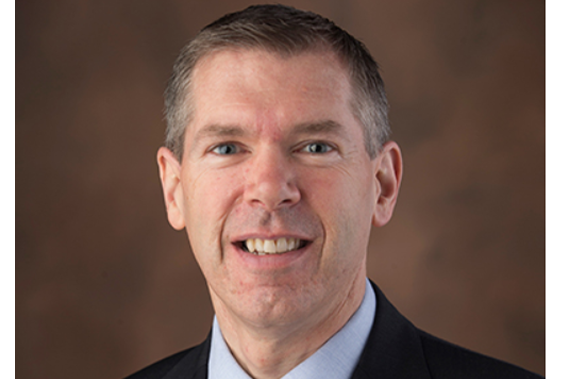
CIO Corner.
Try to imagine a world without sophisticated medical devices, high-tech operating rooms, virtual care and electronic health records that update patient information in real time. These innovations have changed the medical landscape, transformed health care delivery and improved patient care and safety.
Technologies exist to handle an enormous number of complex tasks, but it’s not just about the systems. All advancing technologies support one key goal — helping Houston Methodist achieve its mission of unparalleled safety, quality, service and innovation to improve patient care.
Innovations in imaging, 5G and cloud computing will bring improvements to patient care and business operations and are technologies we are exploring now.

Imaging enhancements.
We’re working with our clinicians to identify opportunities for point-of-care imaging at the bedside. This new capability will benefit patients by eliminating the need to transport them to an imaging suite for things like ultrasound, CT, MRI or PET scans.
Bedside imaging isn’t just a convenience. It also improves patient care by providing faster, more efficient and cost-effective imaging results that providers use to make treatment decisions. Additionally, the technology can be used by nurses or phlebotomists to minimize discomfort for more routine procedures, such as drawing blood or placing IVs.
One innovation we’re already using is Butterfly for point-of-care ultrasound, which uses next-generation, Ultrasound-on-Chip technology, allowing sonographers to scan the whole body with a single ultrasound probe. Typically, different types of probes are required to scan various parts of the body, but this technology uses just one probe and leverages the processing power of a mobile phone to adjust the ultrasound signal to visualize various parts of the body.
5G. Opportunities and challenges.
As 5G, the next generation of wireless network technology, becomes more widely available, we’re looking at the best way to incorporate this faster, improved mobile network into our systemwide infrastructure. In addition to conveniences like faster downloads, a key benefit for us is better connectivity for all our medical devices, opening a new frontier for patient care.
5G capability means that soon, someone with a chronic condition like heart disease can have an implanted defibrillator notify the cardiologist instantly if the patient has a defib incident. Or a diabetes patient can wear an insulin pump that auto-feeds information directly to the endocrinologist.
It’s better in the cloud.
If you use Google Drive, Dropbox, Box.com or other similar services, you’re using cloud storage applications, and you know how easy it is to upload and access photos and files. You also know that your photos and documents are protected from hurricanes, fires or anything that can destroy physical devices. With cloud computing, applications run on the internet, so you don’t need to download them to your laptop or mobile device.
We can bring on new technologies faster and keep them updated with the latest continuous software improvements, without significant service interruptions. It’s also easier to integrate these systems with other technologies, allowing us to focus on what matters most — introducing new technologies to help our patients and team members.
Emerging technologies. Improving patient care.
Technology advancements are occurring daily, along with multiple ways to use these new tools to improve the way we deliver patient care. Artificial intelligence, virtual reality, voice technology and chatbots are just a few of the innovations that we’re exploring and developing, incorporating them into systems that are responsive to our needs and ability to provide unparalleled patient care.
As technology continues its evolution, many tools are converging into systems that improve the way we deliver patient care. Just as our employees always push the limits to improve the multi-faceted areas that keep Houston Methodist running, health care technology breakthroughs continue helping us achieve our mission of delivering exceptional patient care.
